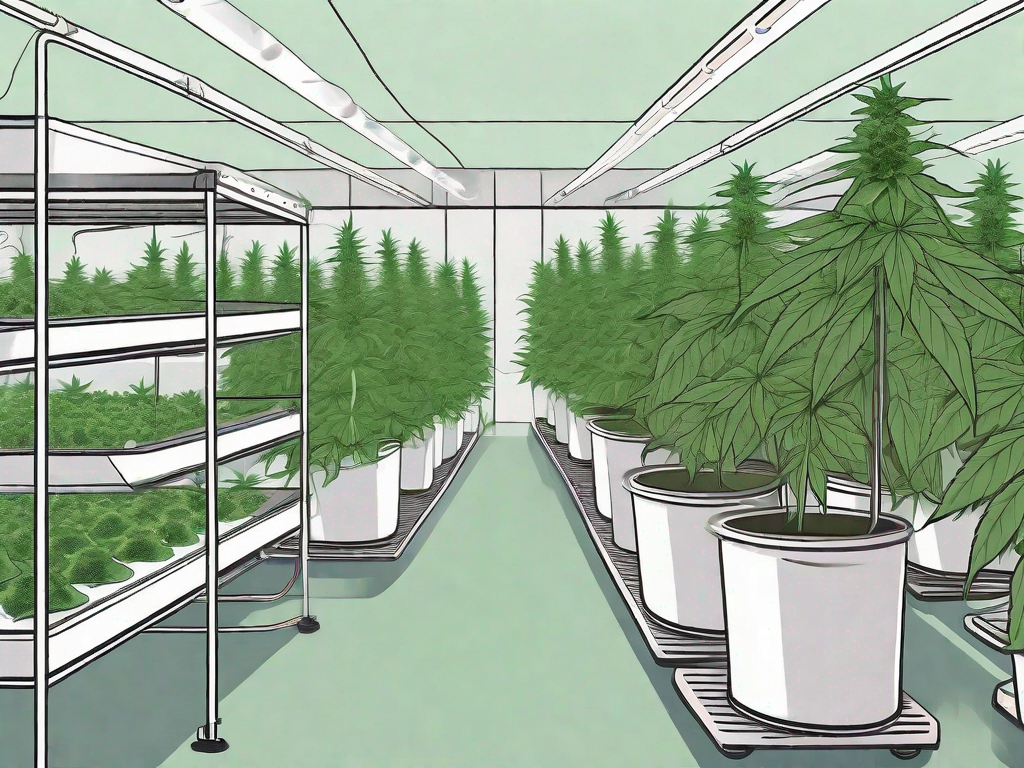Mastering Advanced Cannabis Cultivation: Techniques for the Expert Grower

Mastering Advanced Cannabis Cultivation: Techniques for the Expert Grower
As an expert grower, you're always looking for ways to refine your craft and take your cannabis cultivation to the next level. Whether you're a commercial cultivator or a home grower, there's always more to learn in this ever-evolving field. This guide will delve into the advanced techniques that can help you maximize your yield, improve the quality of your product, and streamline your cultivation process.
Understanding the Plant's Life Cycle
Germination and Seedling Stage
The journey of cannabis cultivation begins with germination. This is when the seed breaks open, and a small white root emerges. It's crucial to provide the right conditions for germination, including moisture, warmth, and darkness. Once the seed has germinated, it enters the seedling stage. This is a delicate time in the plant's life when it's developing its first set of leaves.
As an expert grower, you'll want to monitor your seedlings closely. Ensure they're getting the right amount of light and water, and be on the lookout for any signs of disease or pests. Remember, a healthy start can set the stage for a successful harvest down the line.
Vegetative and Flowering Stage
After the seedling stage, the plant enters the vegetative stage. This is when the plant focuses on growing as big and strong as possible. It's also when you'll start to see the plant's gender. Male plants produce pollen sacs, while female plants produce pistils.
The flowering stage is the final stage of the plant's life cycle. This is when the female plants produce the buds that we all know and love. As an expert grower, you'll need to adjust your care routine during this stage to encourage bud production. This includes changing the light cycle, adjusting the nutrients, and monitoring the plant's health closely.
Advanced Growing Techniques
Screen of Green (SCROG)
The Screen of Green, or SCROG, is a technique that involves using a screen to train your plants to grow in a flat, even canopy. This allows all the buds to receive an equal amount of light, which can increase yield and improve quality.
Implementing a SCROG setup requires careful planning and maintenance. You'll need to install a screen above your plants and regularly weave the branches through the screen as they grow. This can be time-consuming, but the results are often worth the effort.
Sea of Green (SOG)
The Sea of Green, or SOG, is another advanced growing technique. This method involves growing a large number of small plants instead of a few large ones. The idea is to maximize the amount of canopy that's exposed to light, which can increase yield.
While the SOG method can be highly effective, it also requires a lot of plants. This can be a challenge if you're growing in a location with plant count limits. However, if you're able to grow a large number of plants, the SOG method can be a great way to maximize your yield.
Optimizing Your Grow Environment
Lighting
Lighting is one of the most critical aspects of cannabis cultivation. The right lighting can promote healthy growth, increase yield, and improve the quality of your buds. As an expert grower, you'll want to invest in high-quality grow lights and ensure they're positioned correctly to maximize light exposure.
There are several types of grow lights to choose from, including high-intensity discharge (HID) lights, compact fluorescent lights (CFLs), and light-emitting diodes (LEDs). Each type has its pros and cons, so it's important to choose the one that best suits your needs and budget.
Temperature and Humidity
Temperature and humidity also play a crucial role in cannabis cultivation. Cannabis plants prefer a temperature of around 70-85 degrees Fahrenheit during the vegetative stage and 70-80 degrees during the flowering stage. They also prefer a relative humidity of around 40-70% during the vegetative stage and 40-50% during the flowering stage.
As an expert grower, you'll need to monitor your grow environment closely to ensure these conditions are met. This may involve using heaters or air conditioners to control temperature, and humidifiers or dehumidifiers to control humidity.
Harvesting and Curing
Knowing When to Harvest
Knowing when to harvest your cannabis is both an art and a science. Harvest too early, and your buds won't be as potent as they could be. Harvest too late, and the THC may start to degrade.
As an expert grower, you'll need to keep a close eye on your plants as they approach the end of the flowering stage. Look for signs that the buds are mature, such as the pistils changing color and the trichomes becoming cloudy.
Curing Your Buds
Once you've harvested your buds, the final step is to cure them. Curing is the process of slowly drying out your buds in a controlled environment. This helps to preserve the flavor and potency of your buds, and can even improve their quality over time.
Proper curing involves storing your buds in airtight jars in a cool, dark place. You'll need to open the jars regularly to let in fresh air and check for any signs of mold. This process can take several weeks, but it's well worth the wait.
Mastering advanced cannabis cultivation requires a deep understanding of the plant's life cycle, the ability to implement advanced growing techniques, and the knowledge to optimize your grow environment. But with patience, practice, and a little bit of green thumb, you can take your cannabis cultivation to new heights.
